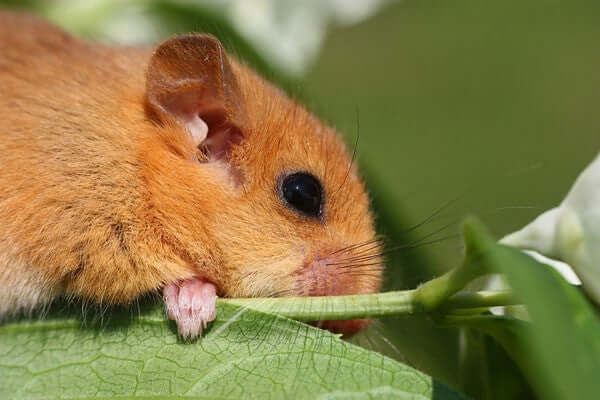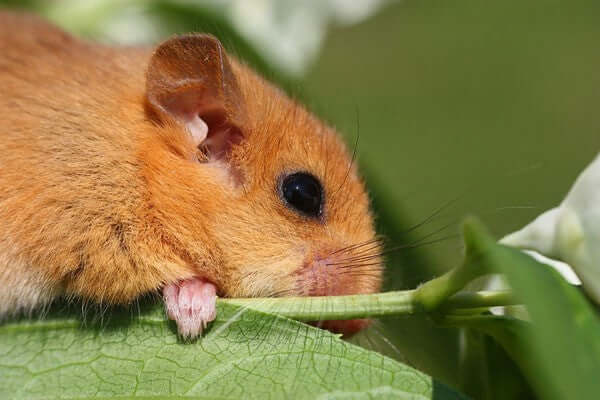
All about Dormice
Share
Bill Oddie has been quoted as saying our British Dormouse is his favourite animal. Vulnerable and rare are two words that describe this cute favourite, although efforts are now focusing on protecting the 10,000 or so dormice that survive, mainly in the southern counties of England.

With large black eyes, a furry tail and golden brown fur, it will be hard for you to spot a dormouse. They are nocturnal and spend most of their time in branches of trees, rarely coming to the ground.
They favour ancient woodlands, overgrown hedgerows and shrubs. If you’re looking for signs of dormouse activity look out on the ground for opened hazelnut shells, especially ones with a neat, smooth, round 8-10mm diameter hole.
In order to conserve energy, when food is scarce, they will curl up in a ball and go into hibernation for a short time. They will begin to hibernate between October/November until May.
Before hibernation they require a range of foods to allow them to feed while they are active. Early in the spring they feed on hawthorn, sycamore and willow but as the season moves on, they eat flowering shrubs such as bramble and honeysuckle. During the summer they will also eat aphids and caterpillars.
Their predators can be grey squirrels, cats, badgers and owls, when they are hibernating at ground level. However their biggest threat is surviving the winter. Due to this and the loss of their natural habitat, they are protected under the Wildlife and Countryside Act 1981. Even where dormice are known to be, their distribution is insufficient – which is why their conservation status is classified as a “Priority Species in the UK Biodiversity Action Plan (UK BAP)”

With a head to body length of just 6.5cm-8cm, a tail of 80% of their body length and a weight of just 15-40g what can we do to help them? If you live in the area where they are present, why not help by simply just putting out a nest box on the ground, helping to provide a home or plant a flowering shrub, like a honeysuckle or bramble.
Notes: The UK Biodiversity Action Plan (UK BAP) was published back in 1994, and was the UK Government’s response to the Convention on Biological Diversity (CBD), which the UK signed up to in 1992 in Rio de Janeiro. The UK was the first country to produce a national biodiversity action plan, and the UK BAP described the biological resources of the UK and provided detailed plans for conservation of these resources. Action plans for the most threatened species and habitats were set out to aid recovery, and national reports, produced every three- to five-years, showed how the UK BAP was contributing to the UK’s progress towards the significant reduction of biodiversity loss called for by the CBD.
(source: http://jncc.defra.gov.uk/ukbap).

